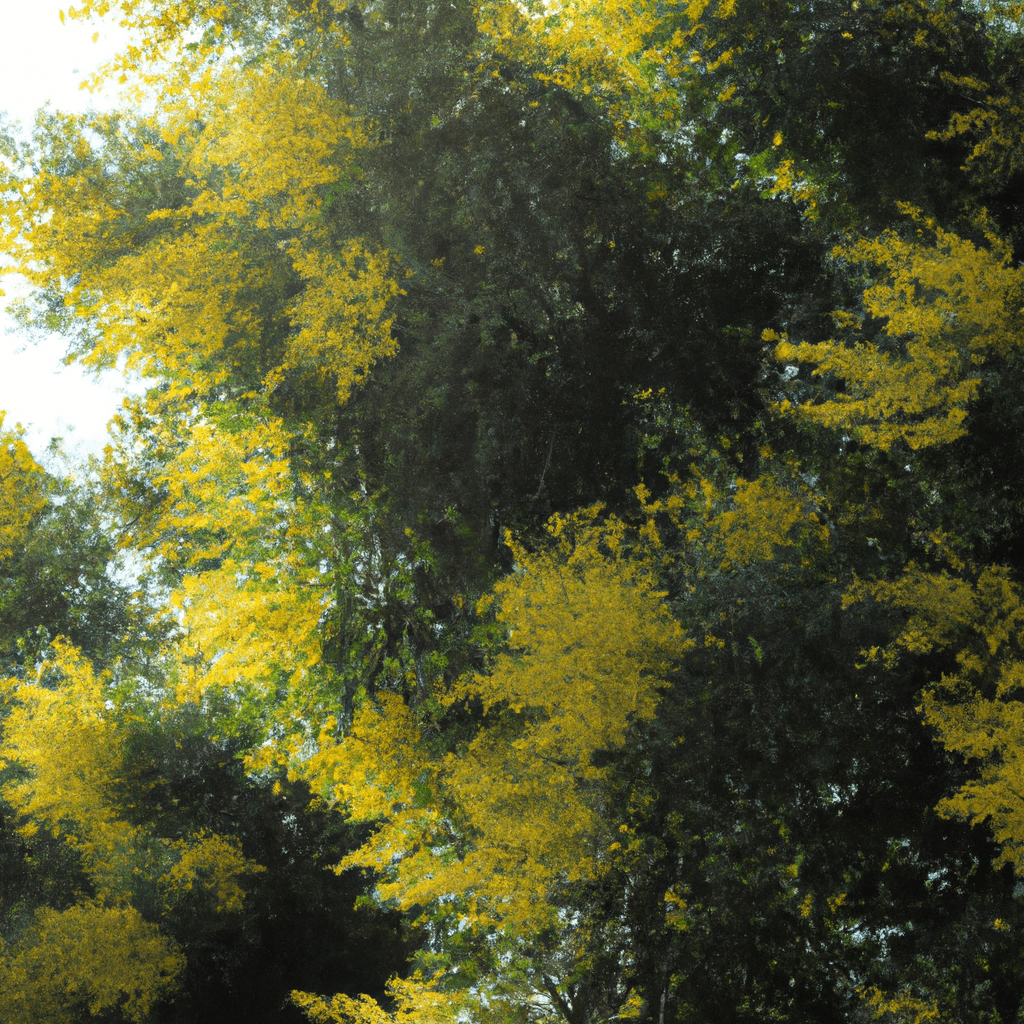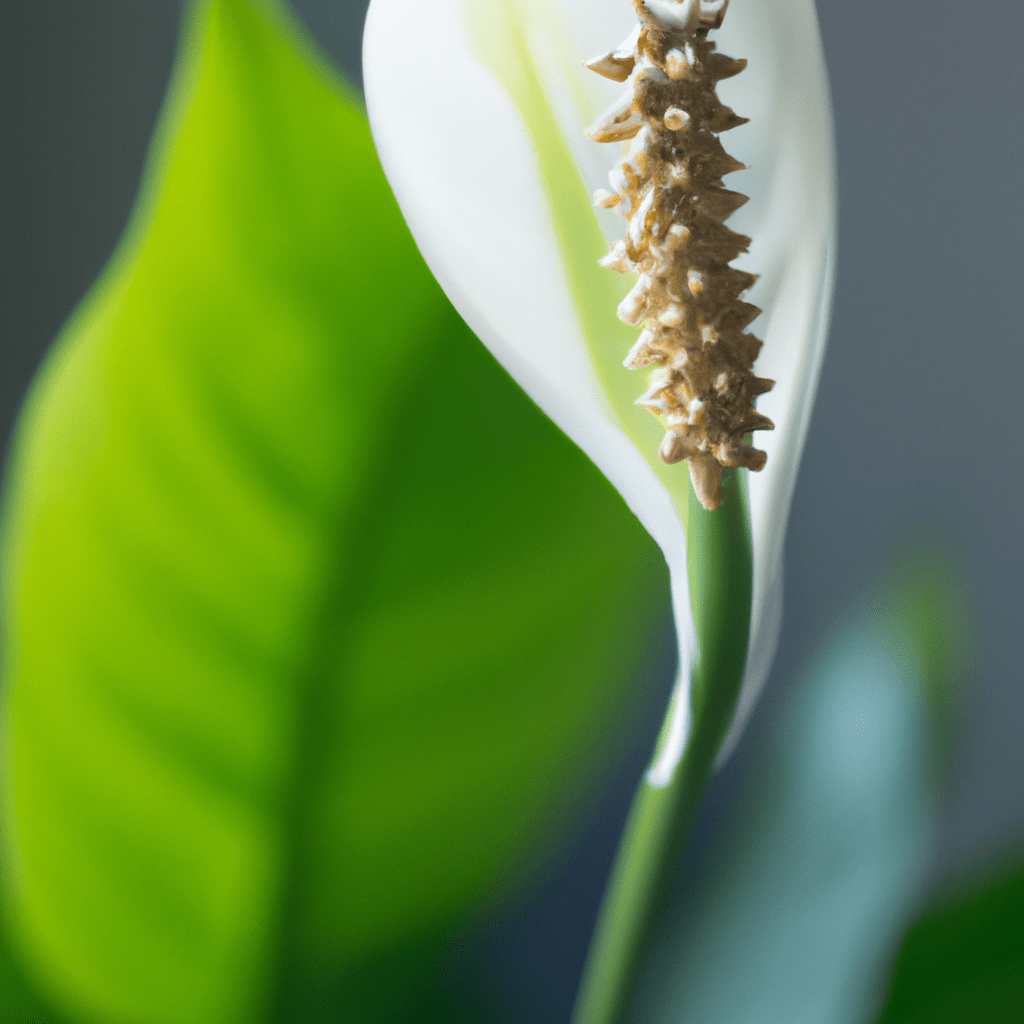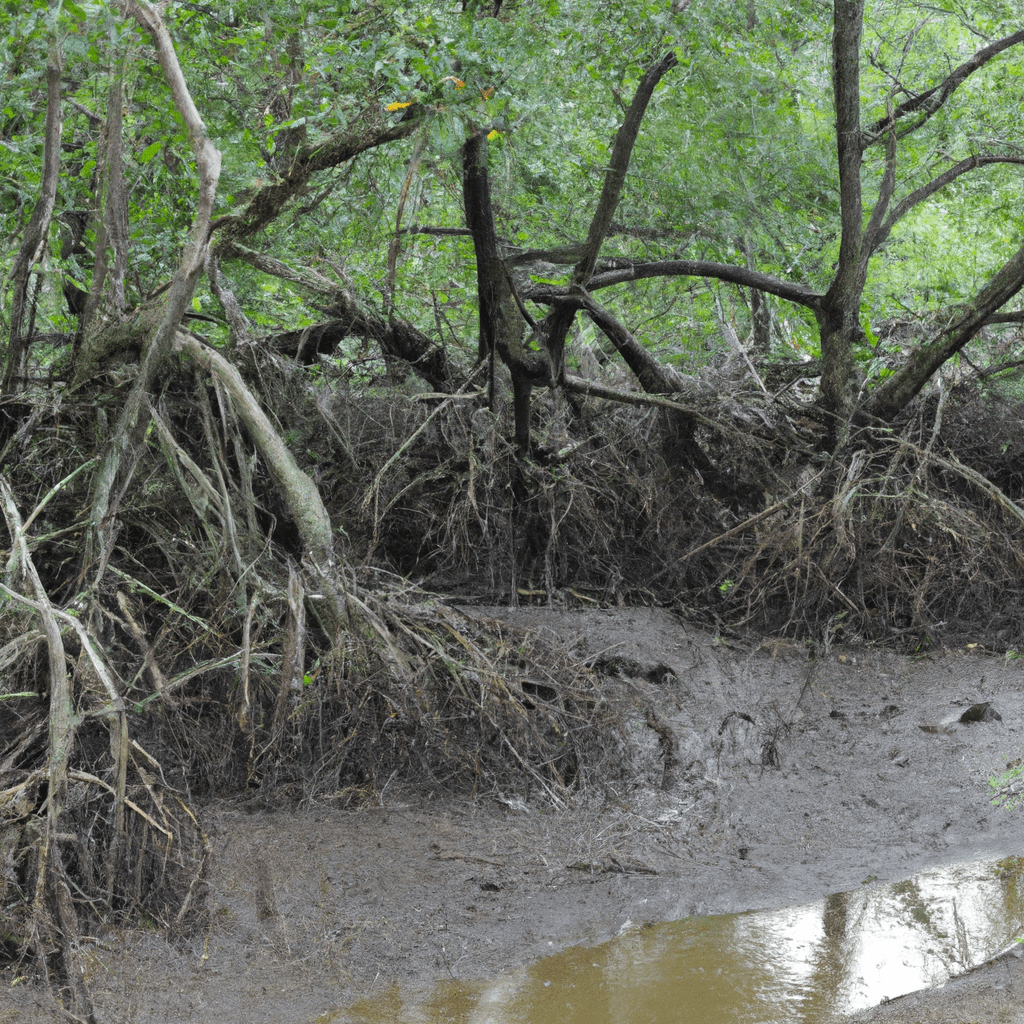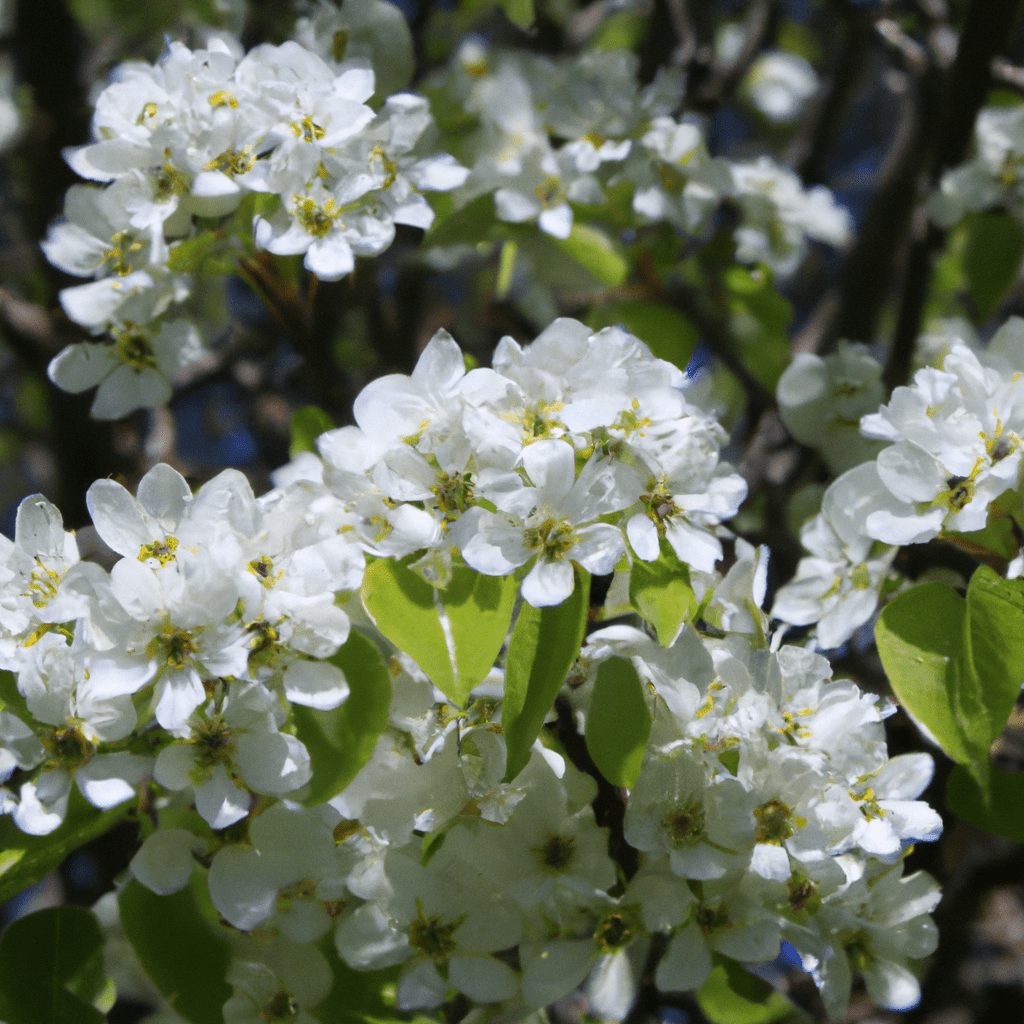Fact 1: A Remarkable Pioneer
The black wattle tree (Acacia mearnsii) is an extraordinary species known for its pioneering nature. It has the remarkable ability to thrive in harsh environments, making it an important player in ecological restoration and land rejuvenation efforts worldwide.
Fact 2: Spectacular Yellow Blooms
When the black wattle tree comes into full bloom, it puts on a dazzling show with its vibrant yellow flowers. These blossoms not only add a burst of color to the landscape but also attract a wide array of pollinators, including bees, butterflies, and birds.
Fact 3: Nitrogen Fixation Superstar
One of the black wattle tree’s most impressive qualities is its ability to fix atmospheric nitrogen into the soil. This process, known as nitrogen fixation, enhances soil fertility and promotes the growth of neighboring plants. It makes the black wattle tree a valuable asset in reforestation projects and sustainable agricultural practices.
Fact 4: Versatile Timber Resource
The black wattle tree boasts exceptional quality timber that is highly sought after in various industries. Its wood is known for its strength, durability, and beautiful grain patterns, making it a favorite among furniture makers, flooring manufacturers, and construction professionals. It has earned a reputation for its versatility and aesthetic appeal.
Fact 5: Medicinal Marvel
For centuries, different parts of the black wattle tree, including its bark and leaves, have been used in traditional medicine. These plant components contain compounds with antimicrobial, anti-inflammatory, and antioxidant properties, making them valuable for treating various ailments and promoting overall well-being.
Fact 6: Fodder for Livestock
The leaves and pods of the black wattle tree serve as excellent sources of fodder for livestock. They are rich in essential nutrients and highly palatable, making them a preferred choice for cattle, sheep, and goats. Black wattle plantations are often established to support sustainable forage production and contribute to the livestock industry.
Fact 7: A Pioneer Species
Thanks to its adaptability and resilience, the black wattle tree is considered a pioneer species. It has the ability to colonize disturbed areas and initiate ecological succession. By stabilizing the soil, providing shade, and enhancing nutrient cycling, it creates favorable conditions for other plant species to thrive.
Fact 8: Paper and Pulp Production
The black wattle tree plays a significant role in the paper and pulp industry. With its rapid growth rate and high cellulose content, it is an ideal source of raw material for paper production. Black wattle plantations are cultivated specifically for this purpose, supporting sustainable paper production and reducing pressure on natural forests.
Fact 9: Champion of Water Conservation
Black wattle trees have extensive root systems that aid in soil stabilization and water conservation. Their deep roots can access groundwater and help prevent soil erosion. In regions prone to drought, black wattle stands act as natural water retention systems, benefiting the surrounding ecosystem.
Fact 10: Global Distribution
Although native to Australia, the black wattle tree has been introduced and cultivated in many parts of the world. Its adaptability to different climates and soil conditions has allowed it to thrive in regions across Africa, Asia, and the Americas. Its global distribution highlights its versatility and adaptability as a species.
Fact 11: Ecological Indicator
The presence of black wattle trees in an area can provide valuable insights into the ecological conditions of that region. These trees often indicate disturbed or degraded ecosystems, as they are quick to colonize and establish themselves in such environments. Their presence can prompt conservation efforts and ecosystem restoration initiatives.
Fact 12: Source of Tannins
Black
wattle bark contains significant amounts of tannins, which are widely used in the tanning industry. Tannins have the ability to bind to proteins and other organic substances, making them valuable for leather production and various other applications, including dyes, inks, and wood preservatives.
Fact 13: Soil Improvement Agent
Black wattle trees have a beneficial impact on soil quality. Their extensive root systems help improve soil structure, enhance water infiltration, and increase nutrient availability. They also contribute organic matter to the soil through leaf litter and provide a protective canopy that reduces soil erosion.
Fact 14: Fire Resistant Properties
Black wattle trees have developed several adaptations to withstand and recover from fire. Their bark is thick and insulating, protecting the tree’s cambium layer from heat damage. Additionally, the trees have the ability to resprout after fire, allowing them to quickly regenerate and reestablish in fire-prone ecosystems.
Fact 15: Important Source of Nectar
The black wattle tree’s flowers are a valuable source of nectar for bees and other pollinators. The abundance of nectar attracts these beneficial insects, supporting pollination and the overall health of surrounding plant communities. It contributes to the biodiversity and ecological balance of the ecosystem.
Fact 16: Ornamental Value
Beyond its ecological and commercial significance, the black wattle tree also possesses ornamental value. Its graceful appearance, with feathery foliage and bright yellow flowers, makes it an attractive addition to gardens, parks, and landscapes. It adds visual interest and diversity, creating a captivating focal point.
Fact 17: Support for Indigenous Wildlife
Black wattle trees provide essential habitat and food sources for a variety of indigenous wildlife species. Birds, mammals, and insects find shelter, nesting sites, and nourishment within the tree’s branches, leaves, and flowers. The presence of black wattle contributes to the overall biodiversity and ecological balance of the ecosystem.
Fact 18: Carbon Sequestration Role
As with many tree species, the black wattle tree plays a role in carbon sequestration. Through the process of photosynthesis, it absorbs carbon dioxide from the atmosphere and stores carbon in its biomass. This helps mitigate the effects of climate change by reducing greenhouse gas concentrations in the atmosphere.
Fact 19: Long History of Use
The black wattle tree has a long history of human use. Indigenous communities in Australia have utilized different parts of the tree for various purposes, including food, medicine, and tools. Its cultural significance and traditional knowledge associated with its use have been passed down through generations.
Fact 20: Essential in Agroforestry Systems
Black wattle trees are commonly integrated into agroforestry systems due to their multiple benefits. They provide shade and windbreaks, improve soil fertility, and offer valuable products such as timber and fodder. Agroforestry practices that include black wattle trees contribute to sustainable land use and agricultural productivity.
Fact 21: Honey Production
Black wattle flowers produce a distinctive and flavorful honey that is highly prized by beekeepers. The nectar collected from the flowers imparts a unique taste and aroma to the honey, making it a sought-after delicacy. Black wattle honey is known for its golden color and sweet, floral notes.
Fact 22: Pioneer in Mine Site Rehabilitation
The black wattle tree has proven to be a pioneer in the field of mine site rehabilitation. Due to its ability to tolerate harsh conditions and fast growth, it is often used to restore degraded areas, including mine sites. The tree’s extensive root system helps stabilize the soil and prevent erosion, while its ability to fix nitrogen improves soil fertility. Black wattle trees have been successfully planted on mine sites to reclaim and rehabilitate the land, gradually restoring biodiversity and creating a sustainable ecosystem. Their resilience and adaptability make them invaluable in the restoration of damaged landscapes and the promotion of environmental sustainability.
Fact 23: Sustainable Biomass Fuel
Black wattle trees are often cultivated for their high biomass productivity. The wood and branches of the tree can be used as a sustainable source of biomass fuel. They can be converted into wood chips, pellets, or charcoal, providing an eco-friendly alternative to fossil fuels.
Fact 24: Important Host Plant
The black wattle tree serves as a vital host plant for certain species of butterflies and moths. These insects lay their eggs on the leaves, and the resulting caterpillars feed on the foliage. The presence of black wattle supports the life cycle and population of these beautiful and important pollinators.
Fact 25: Role in Wind Erosion Control
Black wattle trees are effective in controlling wind erosion in areas with sandy or loose soils. Their dense foliage acts as a windbreak, reducing the impact of strong winds and preventing the displacement of topsoil. By anchoring the soil and reducing erosion, they contribute to land conservation efforts.
Fact 26: Indigenous Medicinal Uses
In traditional medicine practices, various parts of the black wattle tree have been used by indigenous communities. The bark and leaves are known for their medicinal properties and have been used to treat ailments such as skin infections, coughs, and digestive disorders. Traditional knowledge surrounding these uses is passed down through generations.
Fact 27: Habitat for Beneficial Insects
Black wattle trees attract and provide habitats for a range of beneficial insects, including predatory wasps and beetles. These insects play a crucial role in controlling pest populations and maintaining ecological balance. The presence of black wattle trees supports natural pest control and reduces the need for chemical interventions.
Fact 28: Traditional Woodcraft
The durable and attractive wood of the black wattle tree has been used in traditional woodcraft. Indigenous communities and artisans have crafted various items, such as tools, weapons, and decorative objects, from the timber. These cultural practices highlight the tree’s importance in traditional craftsmanship and cultural heritage.
Fact 29: Drought Tolerance
Black wattle trees exhibit remarkable drought tolerance, allowing them to thrive in arid and semi-arid regions. Their deep root systems enable them to access water stored deep in the soil, making them resilient in times of water scarcity. Their ability to withstand drought contributes to their success in diverse environments.
Fact 30: Valuable Erosion Control Plant
The black wattle tree’s extensive root system plays a significant role in erosion control. Its deep roots stabilize soil and prevent erosion on slopes and degraded areas. The trees’ ability to bind soil particles together helps retain moisture and prevent runoff, promoting soil conservation and preventing land degradation.
Conclusion
The black wattle tree, with its pioneering nature and numerous beneficial qualities, proves to be a remarkable species. From its stunning yellow blooms to its versatile uses in timber, medicine, and ecological restoration, the black wattle tree has earned its place as a valuable resource. Its role in carbon sequestration, erosion control, and supporting biodiversity further highlight its significance. With its adaptability and ability to thrive in challenging environments, the black wattle tree continues to leave an indelible mark on both natural ecosystems and human societies.



